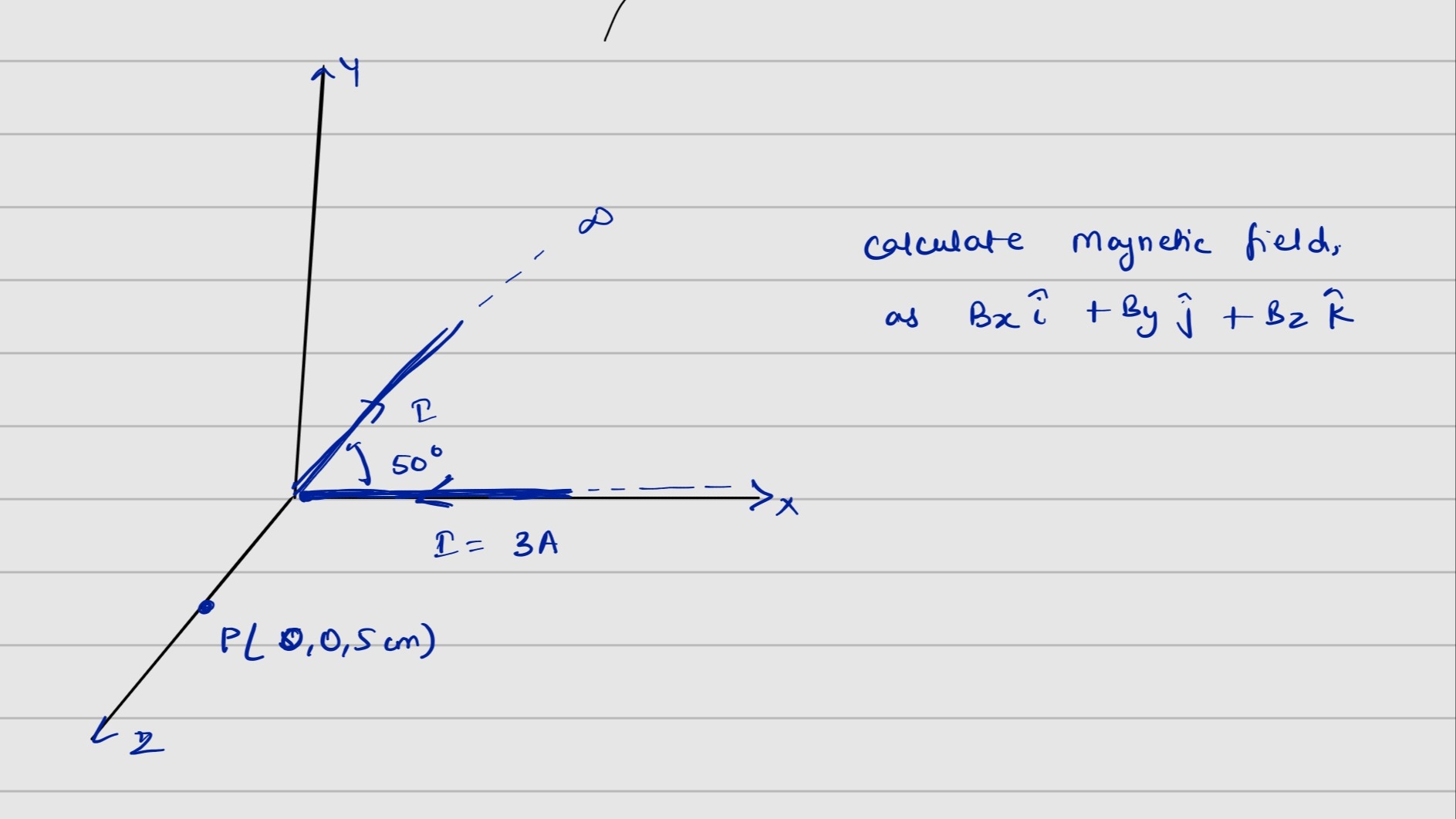Question
Question: calculate magnetic field, as $Bx \hat{i} + By \hat{j} + Bz \hat{k}$...
calculate magnetic field, as Bxi^+Byj^+Bzk^

B=0i^−1.06×10−5j^+0k^(T)
Solution
We wish to find the magnetic field at point
P(0,0,0.05m)in a 3D coordinate system (with x to the right, y upward, and z “downward”). A current I=3A flows along the positive x–axis. In the diagram a ray labelled “r” from the origin makes an angle 50∘ with the x–axis. (In the standard formula the two ends of the wire subtend angles θ1 and θ2 at P; here the lower (finite) end at the origin gives θ1=90∘ since the line joining P to the origin is perpendicular to the x–axis, and the other (upper) end gives θ2=50∘.)
For a finite straight conductor the magnetic field at a point located a perpendicular distance d from the wire is
B=4πdμ0I(sinθ1+sinθ2)with direction given by the right–hand rule (circling the wire).
Here,
- d is the perpendicular distance from the x–axis to P. Since P(0,0,0.05) is 0.05 m from the x–axis, we have d=0.05m.
- θ1=90∘ so sinθ1=1.
- θ2=50∘ so sinθ2≈0.7660.
Thus the magnitude is
B=4π(0.05)μ0I(1+0.7660)=4π(0.05)(4π×10−7)(3)(1.7660).Cancel the 4π’s:
B=0.053×10−7(1.7660).Now,
0.053×10−7=6×10−6.Thus,
B=6×10−6×1.7660≈1.06×10−5T.Direction:
For a current along +i^ the magnetic field “circulates” around the wire. At point P (which lies along the +k^ direction relative to the wire) the right–hand rule tells us that the field is in the −j^ direction.
Therefore, the magnetic field at P is:
B=0i^−1.06×10−5j^+0k^(T).Minimal Explanation of the Core Steps
- Identify that P is at a perpendicular distance d=0.05m from the x–axis.
- Recognize that the conductor is finite – with one end at the origin (θ1=90∘) and the other “end at infinity” or making a 50∘ with the x–axis (θ2=50∘).
- Use
with μ0=4π×10−7T\cdotpm/A. 4. Compute the magnitude and assign the direction (using the right–hand rule, the field at P is along −j^).
